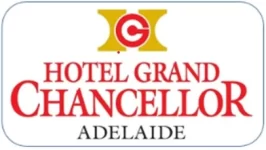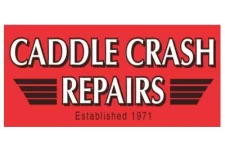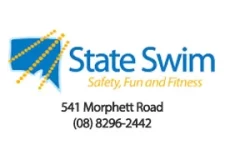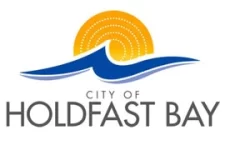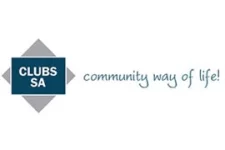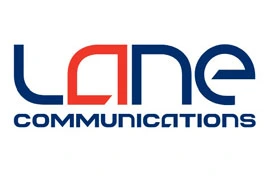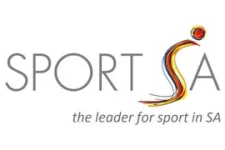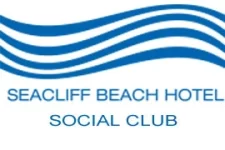Surf Sports
Competition Requirements & Registration
Any Senior Member (Under 14 and above) who is currently financial, holding the SRC or Bronze Medallion, and proficient for that season; is able to compete at Senior Carnivals – and if over 30 years of age, at Masters Titles as well. In order to compete you must complete a minimum of 16 patrol hours per calendar year unless an exception applies.
Interested in one of the below competitions? Contact us today to learn more about available training sessions and competition registration.
Water Events
Explore the various events by clicking any of the images below, each offering a unique glimpse and in-depth description of the surf sport event.
-

-

Surf Race & Surf Teams:
Starting from a standing position on the beach, competitors dash, wade, and swim 400 meters into the sea. Once there, they round a series of buoys before making their way back to shore, finishing with a final run to the finish line. In the Surf Teams event, clubs enter multiple athletes into a single race, and the team’s overall performance is determined by the cumulative points of each member’s finishing position.
-

-

Board Race & Board Relay:
From a standing start on the beach, each competitor enters the water with their racing board, paddling around all the buoys before returning to shore. The winner is determined by the first competitor to cross the finish line on their feet while staying in contact with their board. In the relay event, teams of three compete as each member paddles, runs a short leg, and tags the next competitor to complete the race.
-

-

Ski Race, Double Ski Race & Ski Relay:
From a floating start, competitors paddle their surf skis around three buoys and back to the finish line. In the single race, the finish is marked when any part of the surf ski crosses the line with the competitor and paddle in full contact. For the double event, two athletes share a ski, and the finish is reached when any part of the ski crosses the line with both team members and at least one paddle remaining in contact. Relay races follow the same format, contested in teams of three where each member completes a leg before tagging the next competitor.
-

-

Iron Man & Iron Woman:
Experience the ultimate test of versatility in our Iron events! Competitors tackle a challenging course made up of three dynamic legs—a swim, a surf ski, and a surf board—before sprinting to the finish on the beach. The sequence of these legs is randomly determined by a pre-event draw, ensuring a fresh challenge every time. For our junior athletes, the Iron event is streamlined to focus on the board and swim only, providing a perfect balance of fun and skill development.
-

-

Board Rescue:
In this thrilling two-person challenge, a swimmer teams up with a racing board paddler for a display of speed and seamless coordination. The event kicks off with the swimmer racing from the beach to their designated buoy. Upon arrival, they signal back to the shore, prompting their partner to set off. Once the paddler reaches the swimmer, they unite on the board and paddle back together, crossing the finish line in a burst of teamwork and determination.
-

-

Cameron & Taplin Relay:
Taplin Relay
In the adrenaline-pumping Taplin Relay, teams composed of swimmers, board paddlers, and ski paddlers work in unison over an Ironman course. The relay kicks off with a draw that sets the order of the legs, ensuring a unique challenge every time. This event is versatile in format—it can be contested in three-person teams (one swimmer, one surf board paddler, and one surf ski paddler), six-person teams (with two competitors assigned to each water leg), or four-person teams (one competitor per water leg plus a dedicated beach sprinter to complete the race).Cameron Relay
Designed for juniors, the Cameron Relay mirrors the Taplin Relay in spirit while tailoring the challenge to younger athletes. Teams of four—consisting of a surf board paddler, a surf swimmer, and two runners—compete in a dynamic sequence: water, run, water, and run. The order of the water legs is determined by a ballot, adding an element of surprise to this fast-paced, team-oriented event. -

-

Lifesaver Relay:
In the Lifesaver Relay, nine team members complete five legs—a surf boat, surf ski, surf board, swim, and a final beach sprint. The race always starts with the surf boat and finishes with the sprint, while the order of the other legs is drawn by ballot. Each leg follows a course from the beach to sea, rounding buoys before tagging the next teammate.
-

-

Belt Race & Rescue Tube Race:
Belt Race
The Surf Belt Race is a prestigious, traditional event that uses a surf reel, line, and belt. Starting on the beach, competitors secure a belt around their waist and tow a surf line to their designated buoy, where they signal their finish. Three linesmen and a reel handler provide essential assistance throughout the race.Rescue Tube Race
Held on the same course as the Belt Race, competitors sprint along the beach to grab their rescue tube at the start, then turn and race into the water. They swim to their assigned buoy and signal to complete the race.
R & R
The Rescue and Resuscitation (R&R) competition challenges SLSA members to showcase traditional rescue and resuscitation techniques using the belt and reel. Competitors participate in either 2- or 5-person events, where teams simulate a rescue by combining swimming, resuscitation skills, marching, and drill—all judged against specific criteria.
Swimmers must have moderate to strong ability, while non-swimmers should maintain a moderate level of fitness.
Notably, R&R is one of only two events—alongside the surf race—that has featured at every Australian Surf Championship. Originally, only a 6-person event was available with positions determined by ballot, requiring every team member to be a strong swimmer. Today, many R&R events use pre-determined positions for teams of 5 or 6.
Beach Events
Explore the various events by clicking any of the images below, each offering a unique glimpse and in-depth description of the beach event.
-

-

Sprint:
Competitors run down a straight 90-meter stretch of sand, propelling themselves toward the finish line, while juniors sprint a slightly shorter 70-meter course.
-

-

Sprint Relay:
Teams of four race down a straight 90-meter sand course (70 meters for juniors), each member running one lap while passing a baton. The team whose final runner crosses the finish line first takes the win.
-

-

Beach Run:
Competitors run a course along the sandy beach, covering challenging distances of 1km or 2km that test their speed and endurance.
-

-

Beach Flags:
Competitors start lying on their stomachs, facing away from a set of batons buried 15–20 meters ahead—there are always fewer batons than there are participants. At the sound of the starting gun, they spring to their feet, race to grab a baton, and dive into the action. Those who fail to secure a baton are eliminated. The excitement builds as the elimination process continues, narrowing down the field until only one competitor remains victorious
Surf Boats
A boat crew is composed of five competitors: four rowers and a sweep who directs the team using a sweep oar and clear commands.
Crews start at the water’s edge, poised with their boats, and when the signal sounds, they row to an assigned turning buoy roughly 400 metres offshore before racing back to the beach. The winning crew is the first to steer their boat between the finish flags.
Some events feature a short course, with buoys positioned approximately 250 metres from shore.
The club has a thriving Surfboats section, with a number of male and female crews in various age categories. Seacliff crews compete at boat carnivals during the season, including the Navy series, Brighton Jetty Classic and Senior and Masters State Titles.
Inflatable Resue Boats
Explore the various events by clicking any of the images below, each offering a unique glimpse and in-depth description of the IRB event.
-

-

IRB Rescue:
In this event, each team consists of one patient, one driver, and one crew member. The patient begins at a designated buoy in the water, while the driver and crew member start on the beach. At the signal, the team launches the IRB, proceeds through the surf to pick up the patient, rounds the buoy, and returns to shore.
-

-

IRB Team Rescue:
Teams are comprised of one patient and two crews (one driver and one crew member per crew). The patient is positioned on the seaward side of a designated buoy. Both crews are positioned on the beach side of the crew start/finish line adjacent to their beach position indicator.
On the starter’s signal, the first crew launches the IRB and proceeds through the surf to the patient. On the inside of the turn (as the IRB rounds the buoy), the crew member jumps overboard on the seaward side of the buoy. The driver completes the buoy turn and returns to shore alone.
Meanwhile the crew member of the second crew moves into the water.
The first driver stays in contact and in control of the IRB until the second crew member secures and takes control of the IRB. The first driver runs up the beach and crosses the crew start/finish line to tag the second driver who proceeds to the IRB.
The second crew re-launches the IRB, precedes through the surf to pick-up the patient and the first crew member, rounds their buoy, and returns to shore to finish the event.
-

-

Mass Rescue:
Teams are comprised of one driver, one crewman and two patients. Both patients will be taken out to the buoy, where one will wait on either side (sea side or shore side) of the buoy to be rescued. The crew shall proceed out to sea, pick up their first patient and return to shore. The driver and the patient must exit the IRB where the patient retires to the beach. The driver proceeds to the start/finish line, rounds their respective beach position marker and returns to the IRB. The IRB is re-launched and the crew proceeds to rescue the second patient and return them to shore, on to the beach and across the finish line.
-

-

IRB Rescue – Tube Rescue:
Teams are comprised of one patient, one driver, and one crew member. Patients are positioned at their respective patient buoys, set approximately 25metres on the seaward side of the turning buoys. Crew members are positioned on the beach side of the crew start/finish line, adjacent to their respective beach position indicators.
On the starter’s signal, competitors launch their IRBs, proceed through the surf and turn around their respective turning buoy. The crew member uses the rescue tube.
After the IRB has rounded the turning buoy, the crew member with the rescue tube held in a secure grip, enters the water and swims past the turning buoy to their patients.
The crew member secures the rescue tube around the arms of the patient and tows the patient back to the IRB. Once the crew member makes contact with the IRB or driver, he or she may board before the patient. The driver may assist the crew member and/or patient into the IRB. (Patients may also assist themselves in boarding the IRB.)
After the patient is in the craft and IRB has commenced, the driver navigates the IRB around the team’s respective turning buoy and returns to shore to finish.
March Past
The March Past is a vibrant display of precision and pride, featuring a team of 12 lifesavers marching in perfect harmony along a designated course to the rhythm of music. Each team proudly showcases key elements: a reel carrier, a belt-wearer, and a standard-bearer carrying the club flag.
Open to both juniors and seniors, this iconic event not only celebrates competitive spirit but also honors the lasting legacy of returned servicemen who played a pivotal role in shaping surf lifesaving.
Historically, clubs were required to present a March Past team or at least someone carrying the club standard to compete at carnivals, underscoring its importance in the tradition of surf lifesaving.
Surf Rescue
Explore the various events by clicking any of the images below, each offering a unique glimpse and in-depth description of the surf rescue event.
-

-

First Aid:
In this competition, teams of two must respond to a simulated accident scenario within a time limit that varies by age group. Using props and volunteers as accident victims, teams are required to assess the situation, diagnose the victims' conditions, and administer treatment using items from their first aid kits. Performance is evaluated against set criteria, with points awarded based on accuracy and efficiency.
-

-

Champion Lifesaver:
This event offers individuals the chance to showcase the physical and mental skills essential for surf lifesaving. Competitors are tested across multiple disciplines, including a surf lifesaving knowledge exam, resuscitation assessment, surf race, surf board race, beach sprint, and rescue tube race. It provides a well-rounded challenge that highlights both theoretical understanding and practical lifesaving abilities.
-

-

Champion Patrol:
The Champion Patrol event brings together a series of challenges that showcase teamwork and essential surf rescue skills. Participants compete in a surf teams race and a board/tube rescue relay, while also completing a 20-question theory exam. Additionally, simulated first aid and CPR scenarios test their emergency response abilities. This multifaceted competition highlights how surf lifesavers work together to perform the full range of skills required on a rescue patrol.
Board Riding
Board riding is essentially competitive surfing, with events divided into two categories:
Short Boards (less than 2.74 meters)
In the short board category, competitors are judged on their style, wave selection, and the ability to fully harness the wave’s power. Emphasis is placed on maintaining high speed, executing a variety of maneuvers, and maximizing performance on quality, sizable waves.
Long Boards (minimum 2.74 meters)
The long board competition focuses on controlled execution, blending traditional and modern maneuvers with precision. Competitors must demonstrate mastery by effectively using the entire length of their board while maintaining control throughout their ride.
Pool Rescue
Explore the various events by clicking any of the images below, each offering a unique glimpse and in-depth description of the pool rescue event.
-

-

Obstacle & Technical Events:
Obstacle Swim
Competitors complete a 200‑meter freestyle swim while passing under eight submerged obstacles. For U11‑U13 and 60+ age groups, the course is reduced to 100 meters with four obstacles.Obstacle Relay
In this relay, four team members each swim a 50‑meter freestyle leg while navigating two underwater obstacles along the way.Line Throw
In this timed challenge, competitors launch an unweighted line toward a teammate in the pool and then pull them 12.5 meters to the poolside (10 meters for U11‑U13).Freestyle with Fins
After a dive entry, competitors swim 50 meters freestyle with fins, showcasing speed and streamlined technique. -

-

Rescue Towing Events:
Patient Tow (Juniors)
With a dive entry, the rescuer swims 50 meters freestyle with fins and a rescue tube to reach a patient waiting in the water. The rescuer then secures the tube around the patient, and both return to the start.Manikin Tow (Seniors)
A competitor races 50 meters freestyle with fins while towing a rescue tube. Upon reaching the pool’s turning edge, the tube is fitted around a floating manikin, which is then towed 50 meters back to the finish. -

-

Rescue Retrieval & Carry Events:
Rescue Medley (Seniors)
Competitors swim 50 meters freestyle, then turn and swim 17.5 meters underwater to retrieve a submerged manikin. Once recovered, the manikin is carried to the finish edge.Manikin Carry (Seniors)
A competitor swims 25 meters freestyle before diving to recover a submerged manikin and then carries it to the finish edge. (U14s swim 35 meters before retrieving the manikin.)Manikin Carry with Fins (Seniors)
After a 50‑meter freestyle swim, the competitor dives to recover a submerged manikin and carries it an additional 50 meters to the finish edge.Brick Carry (Juniors)
Starting with a dive, competitors swim 25 meters freestyle, dive to retrieve a submerged rubber brick within 5 meters of the pick-up line, and then carry it to touch the finish edge. U11s may use flippers.Brick Carry Relay (Juniors)
A relay where four competitors each swim 25 meters while carrying a rubber brick. -

-

Team Relay Events:
Manikin Relay (Seniors)
In this relay, four competitors each swim 25 meters while carrying a manikin.Medley Relay
Teams compete across four legs: 50 meters freestyle without fins, 50 meters freestyle with fins, 50 meters freestyle towing a rescue tube without fins, and 50 meters freestyle with fins towing a team member to the finish.Lifesaver Relay (Seniors)
This team event (requiring two male and two female competitors) features four legs: 50 meters freestyle without fins, 50 meters freestyle with fins while picking up a submerged manikin at the end, 50 meters carrying the manikin without fins, and 50 meters carrying the manikin with fins to the finish edge. -

-

Super Lifesaver (Seniors):
This comprehensive challenge requires competitors to swim 75 meters freestyle to recover a submerged manikin, carry it 25 meters to the turning edge, and then release it. After donning fins, they tow a rescue tube for 50 meters. At the turning edge, the tube is fitted around a floating manikin, which is then towed to the finish.
Still Got Questions?
If you have any questions or would like to discuss this opportunity further, don’t hesitate to get in touch with our amazing team today!
Our Proud Supporters

